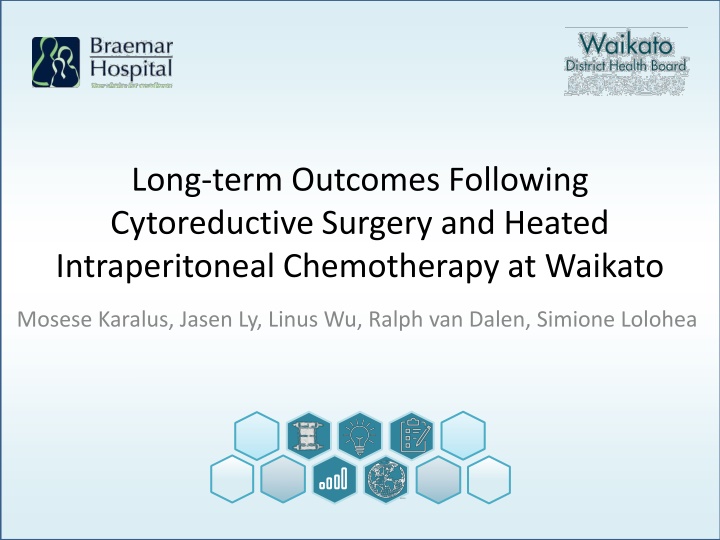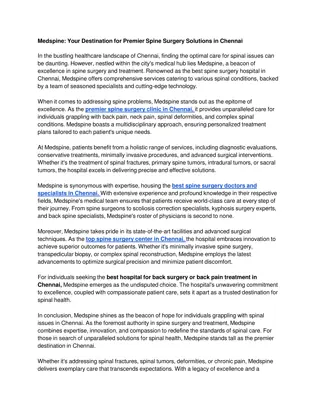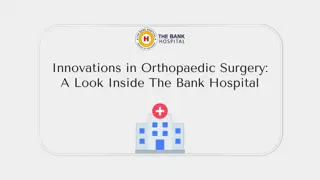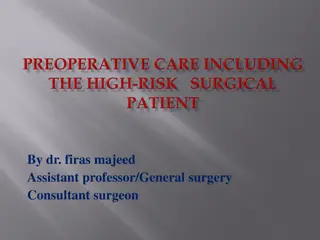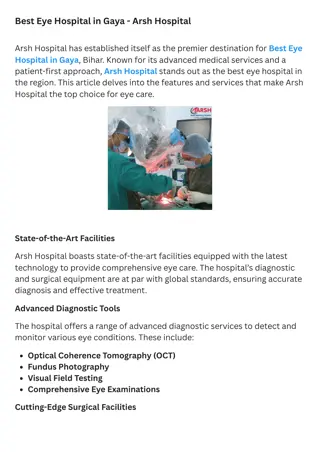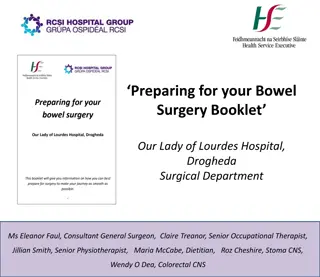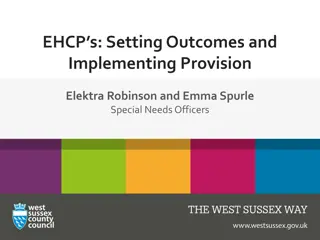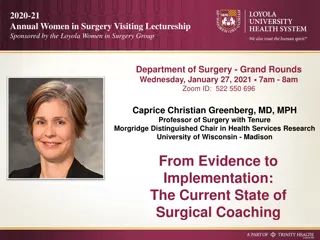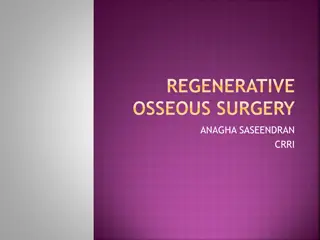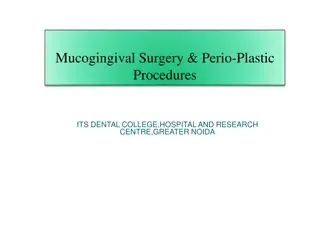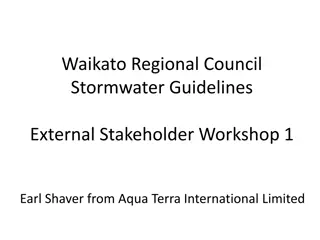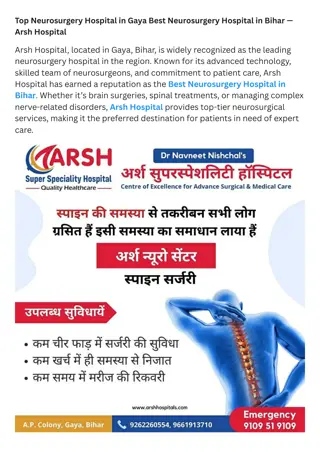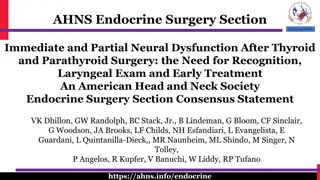Long-Term Outcomes of Cytoreductive Surgery and HIPEC at Waikato Hospital
Historically, the 5-year survival rate for palliative Pseudomyxoma diagnosis was 15%, but with CRS and HIPEC, the rate improved to 84% at Waikato Hospital. This study evaluates the operative and long-term outcomes of the first 100 CRS with HIPEC operations at Waikato from 2008 to 2017, showing high morbidity and favorable survival data. Demographic data revealed a majority of patients being NZ European, with a median follow-up time of 24 months. Referral sources were mainly from Waikato, Auckland, and Canterbury regions.
Download Presentation

Please find below an Image/Link to download the presentation.
The content on the website is provided AS IS for your information and personal use only. It may not be sold, licensed, or shared on other websites without obtaining consent from the author.If you encounter any issues during the download, it is possible that the publisher has removed the file from their server.
You are allowed to download the files provided on this website for personal or commercial use, subject to the condition that they are used lawfully. All files are the property of their respective owners.
The content on the website is provided AS IS for your information and personal use only. It may not be sold, licensed, or shared on other websites without obtaining consent from the author.
E N D
Presentation Transcript
Long-term Outcomes Following Cytoreductive Surgery and Heated Intraperitoneal Chemotherapy at Waikato Mosese Karalus, Jasen Ly, Linus Wu, Ralph van Dalen, Simione Lolohea
Historically, palliative diagnosis Pseudomyxoma 5-year survival without surgery : 15% Cytoreductive surgery with heated intraperitoneal chemotherapy (CRS with HIPEC) High morbidity, favourable survival data Morbidity: 40.9% (Basingstoke, 2014) 5 year survival 84% (Basingstoke, 2014) ` Standard of care for pseudomyxoma peritonei (PMP) Indications expanded to include peritoneal surface malignancy of other primary Introduction.
CRS with HIPEC introduced in Waikato in 2008 Offered at Waikato (public), and, Braemar (private) hospitals, in Hamilton Four colorectal surgeons ` Recently, we published study to explore short-term outcomes for CRS with HIPEC in NZMJ (Ly et. al. 2017)
To evaluate operative and long-term outcomes for the first 100 CRS with HIPEC operations at Waikato ` Aim.
Retrospective analysis Prospective database Study period: 2008-2017 Sources: paper and electronic records treating and referring hospital records Births, deaths & marriages ` Standard Sugarbaker technique with HIPEC Method.
Referral Source by Regions Waikato Auckland Canterbury South Canterbury Nelson Southern Northland Lakes BOPDHB Capital & Coast Whanganui Midcentral Hawkes Bay Tairawhiti Taranaki 27 22 13 12 7 ` 7 7 3 2 Results.
Demographic Data 127 Operations Age 55 (6.3) Sex Female 66% 27 Palliative Debulking BMI 29 (6.3) ` Ethnicity NZ European 75% Maori 13% Pacific 10% Other 2% 100 CRS with HIPEC Surgeries Re-do operations 10 (92 patients) Median Follow-up Time: 24m Braemar 31 Waikato 69
International Literature: (Basingstoke) Intraoperative data Peritoneal Carcinomatosis Index (PCI) 18.9 (not available) Completeness of Cytoreduction Score (CCR) *CCR 0-1: 77% *CCR 0-1: 68% ` Operative Time 8.5 Hours 10.5 hours Intraoperative RBC transfusion 4.1 4.9 * n: 127; Inclusive of debulking surgery patients
Histological Subtypes Appendiceal 75 Colorectal 13 Other: 12 Neuroendocrine 4 ` Mesothelioma 4 Ovarian 3 Gastric 1
PMP by Peritoneal Surface Oncology International (PSOGI) Classification (n:75) Acellular Mucin 8 Low Grade Mucinous Carcinoma Peritonei (LGMCP) prev. disseminated peritoneal adenomucinosis (DPAM) 57 ` High Grade Mucinous Carcinoma Peritonei (HGMCP) prev. peritoneal mucinous carcinomatosis (PMCA) 3 High Grade Mucinous Carcinoma Peritonei with Signet Ring Cells (HGMCP S) 6
Number of Complication by Clavien-Dindo Classification Clavien-Dindo Classification Number of Complication by 1 1 22 22 1 or More Complications: 61% 2 2 45 45 3a 3a 13 13 Major International Data Chua et. al. 2012 (Aus) 24% ` 3b 3b 16 16 Complication Rate (Grades 3-4) (n:100) 31 % 4a 4a 5 4 4b 4b 1 1 5 5 1 1
Complications and Operative Caseload by Year Graph of all complications over time 20 18 16 From 2008 to 2017 x time y number 14 Number 12 Number of Patients 10 8 ` Major Complications 6 4 2 0 2008 2009 2010 2011 2012 2013 2014 2015 2016 2017 Year
Length of stay (days) Hill et. al. 2014 (Basingstoke) Hospital (SD) 16 (16) 16 ` HDU 3.1 - Longer stay if experienced major complication p<0.001
5-year Recurrence-Free Survival by Primary Malignancy Primary Malignancy Appendiceal 69.3% Neuroendocrine 0% Colorectal 39% Mesothelioma 25% Overall 58% Cumulative survival ` Variables associated with recurrence: Received stoma (p:0.04) Lymph node metastasis (p:0.013) Received adjuvant chemotherapy (p<0.001) Time to Recurrence (days)
5-Year Survival by Primary Malignancy Primary Malignancy Cumulative survival Appendiceal 81.3% Mesothelioma 75% Colorectal 77% Neuroendocrine 25% Overall 78% ` (p <0.05) Time to death (days)
5-Year Survival by PSOGI Classification 5 year survival by PSOGI Classification PMP by PSOGI Classification Acellular LGMCP HGMCP Acellular 87.5% LGMCP 86% Cumulative survival HGMCP 67% (p <0.05) HGCMP-S 33% Overall 81.3% ` 5 year survival Overall PMP Basingstoke, 2014 84% Time to death (days)
Comparable morbidity and perioperative mortality to literature Comparable recurrence and survival ` Improved outcomes with experience Conclusions.
General Surgery Department, Waikato Hospital Clinical Audit Department, Waikato Hospital ` Braemar Hospital Surgeons on Clarence Acknowledgements.
